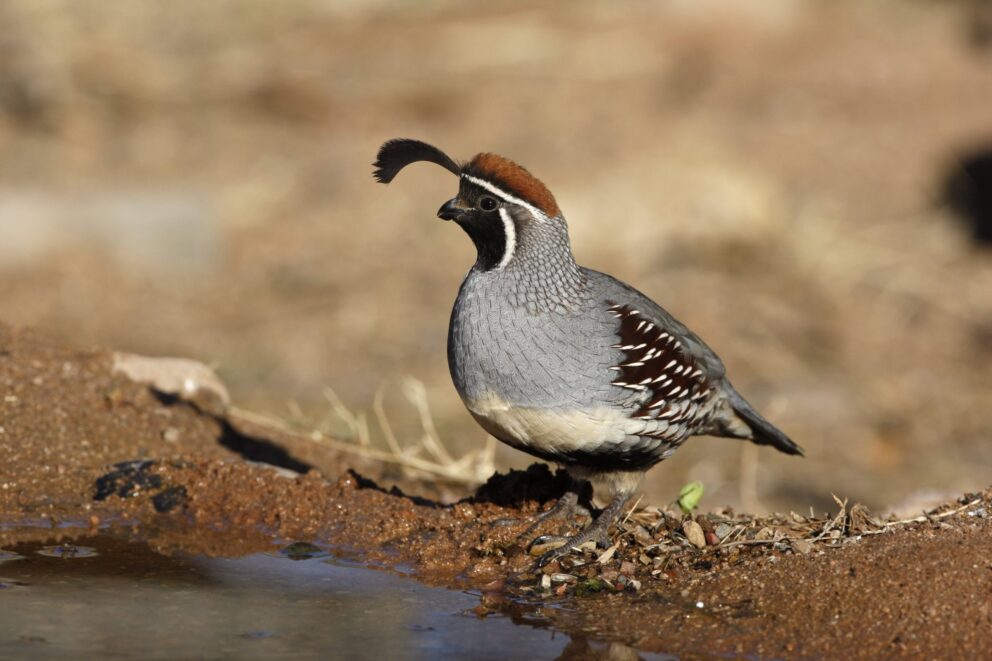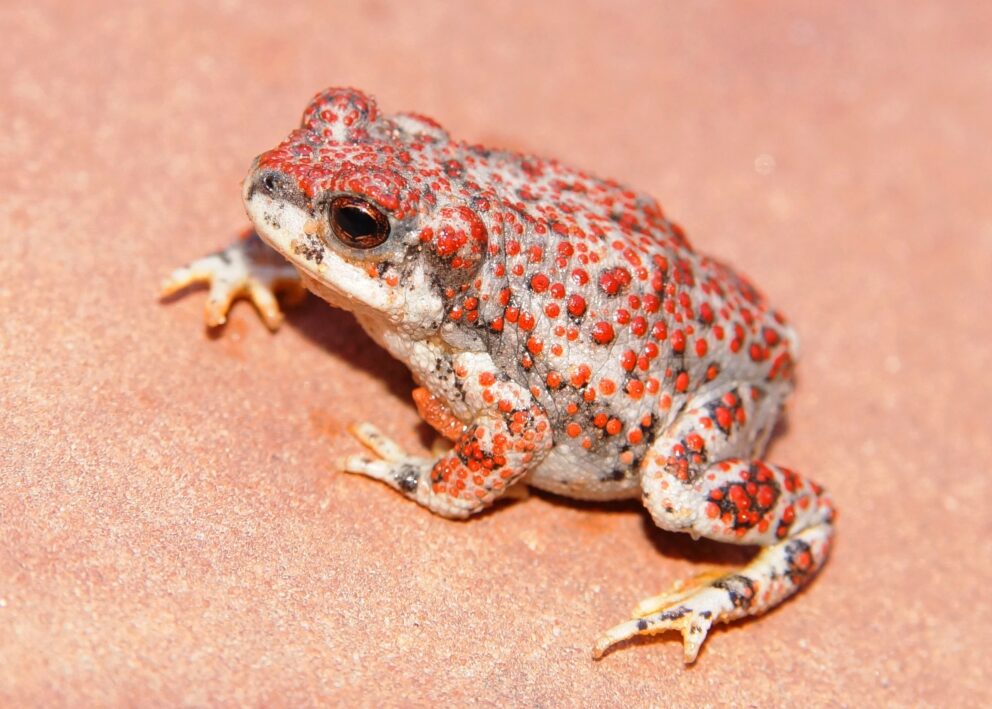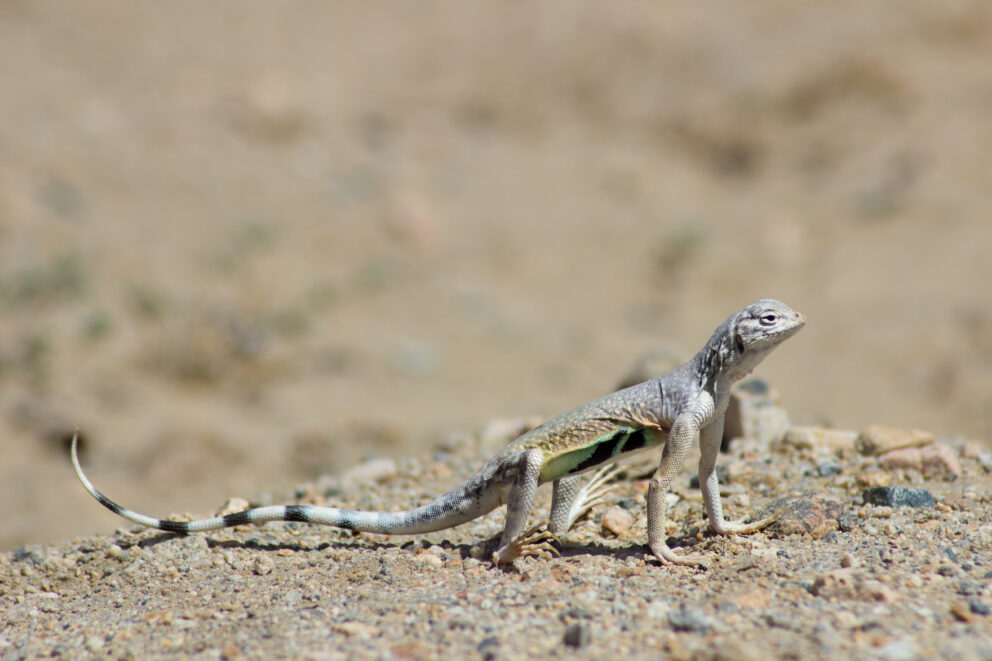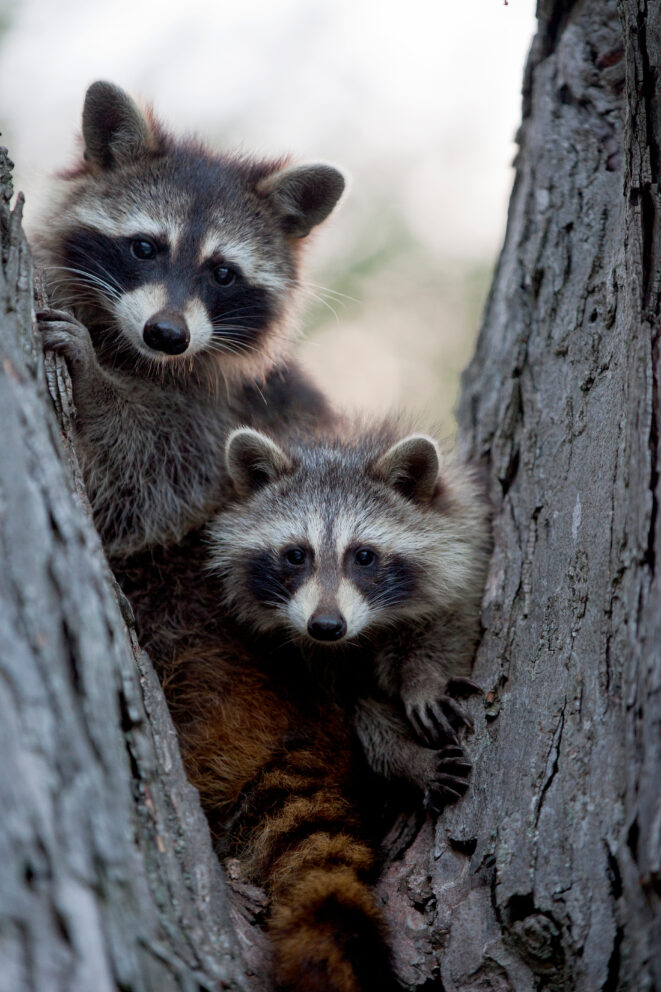- SCIENTIFIC NAME
- Callipepla gambelii
- CLASSIFICATION
- Bird
- LIFE SPAN
- 1-4 Years
- SIZE
- 9.8-10” | 0.35-0.44lbs
- STATE CONSERVATION STATUS
-
- State Protected
- FEDERAL CONSERVATION STATUS
- Least Concern
- GAME STATUS
- Game
- GAME TYPE
- Upland Game
- Washoe
- Humboldt
- Pershing
- Churchill
- Mineral
- Lyon
- Douglas
- Carson City
- Storey
- Elko
- Lander
- Eureka
- White Pine
- Esmeralda
- Nye
- Lincoln
- Clark
Habitat & Range
Gambel’s Quail can be found among scrub vegetation and other plants like saguaro, catclaw acacia and saltbrush. They can be found in the Sonoran, Chihuahuan and Mojave deserts as well as some parts of the Great Basin.
- Agricultural Lands
- Mojave desert
Threats
- Habitat Degradation
Natural History
Gambel’s Quail diet mostly consists of plants, which includes seeds, grasses, and leaves that are eaten throughout the year. They are well adapted to living in the harsh Mojave Desert climate that is found in southern Nevada. This is the land of extremes where daytime temperatures in the summer can exceed 110 degrees Fahrenheit (43 Celsius) and winter temperatures can drop to below freezing. This quail is native to the Mojave desert and the southern portion of the Great Basin. Their populations are dependent on precipitation that falls in the desert. When the rains come and grasses, seeds and water are abundant, they produce large broods of young, up to 15, and there are large numbers of birds. When it doesn’t rain, and drought conditions persist, they produce small broods, or may not even produce young in those years. Nests are hidden under shrubs or rocks for protection against predators, such as hawks.












